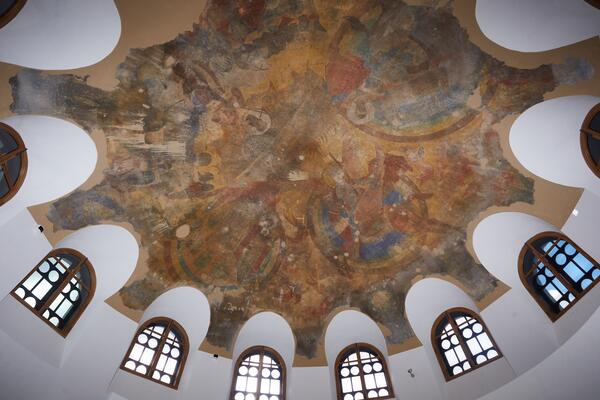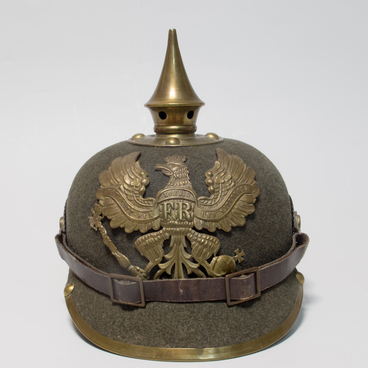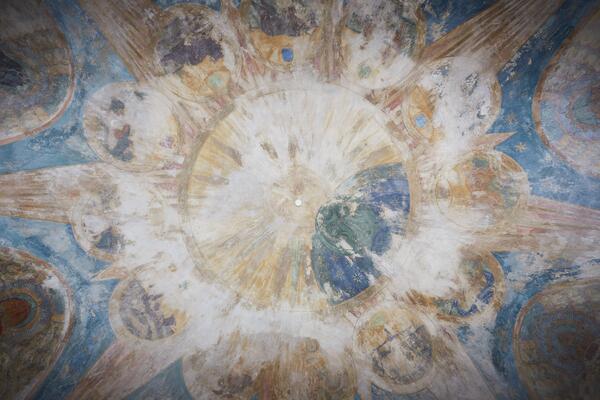The plafond of the Gun Chamber was dedicated to the heavenly host. The source of the painting was the icon “Blessed Be the Host of the Heavenly Tsar” from the Assumption Cathedral of the Moscow Kremlin. It was commissioned by Ivan the Terrible to commemorate his Kazan campaign of 1552.
The name of the icon was inspired by a verse from liturgical hymns — stichera — dedicated to holy warrior-martyrs. In this particular hymn it is said that the martyrs, having suffered for Jesus Christ and having accepted death for Him, become warriors of the heavenly King, hence, they become equal to angels. In addition to the sticheron, the plot was also inspired by the texts of the Book of Revelation and icons on apocalyptic themes.
The ceiling depicts a city engulfed in flames — the “Evil City” — abandoned for a new heavenly city. A procession of soldiers on horseback and on foot moves away from it, heading to Heavenly Jerusalem, where the soldiers are met by the Mother of God with the Infant Jesus. He gives martyr crowns to the angels for the soldiers. From Heavenly Jerusalem, a wide heavenly river flows towards the soldiers — a symbol of the true faith, and Russian rulers are deemed zealous defenders of the faith.
At the head of the procession of soldiers is Michael the Archangel, leader of the heavenly host and patron of Moscow sovereigns. He rides on a red winged horse. Behind him, on the ceiling, St. George the Victorious, the patron saint of Russian soldiers, is depicted piercing a serpent with a spear. The next equestrian figure is probably Vladimir Monomakh or Emperor Constantine the Great. Prince Vladimir and his sons Boris and Gleb follow him in the ranks of foot soldiers.
The painting of the plafond of the Gun Chamber is well preserved and still makes a strong impression, however, upon closer examination, it is noticeable that the painting was left unfinished.
Adjacent to the Gun Chamber is the Gallery of St.
George’s Recipients. Its ceiling was decorated with images of regimental coats
of arms or images of regimental badges. The construction documents emphasized
that “it is desirable to arrange the symbolic images and inscriptions designating
the names of military units along the galleries in chronological order of
seniority and, first of all, it is necessary to single out into a separate
group those military units that have some reason to believe that their history
dates back to the time of Peter the Great, for example, the following
regiments: Life-Grenadier Erivan Regiment of His Majesty Mikhail Feodorovich,
the 65th Moscow Life Guards Regiment, formerly Butyrsky…”



